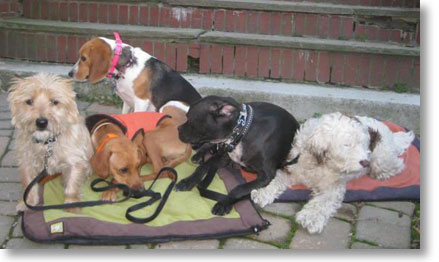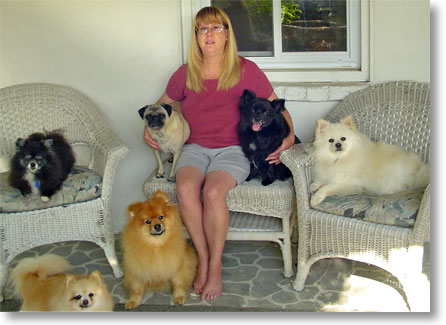Is what we call something really important? Does it really matter if we call it a command or a cue, obedience or compliance? What are the fundamental differences? In class, I often tell my students that my dogs don’t have to sit, they get to sit. So what does that mean?

Dogs displaying avoidance and fear behaviors upon being forced to sit in close proximity to each other.
Trainers who teach dogs commands usually rely on avoidance. The dog “obeys his commands” to avoid an unpleasant consequence, like a leash pop, a poke, or even a dirty look. The dog is working to avoid something unpleasant. That unpleasant consequence can, in the dog’s mind, become associated with the command, the person issuing it, or the location it is being issued. The command itself can become a scary or bad thing.
A cue, on the other hand, is defined as a signal to a performer to begin a specific speech or action. That is all it is, a prompt or a signal that your dog recognizes and associates with the behavior.

Dogs sitting relaxed and happy, knowing that sit
makes good things happen.
makes good things happen.
When we reward dogs for compliance, we create positive association with the action and with us. Sit is no longer an action the dog has to take to avoid something unpleasant. It becomes something the dog enjoys doing because it makes good things happen. The cue becomes a happy thing. As we continue to work with our dogs, we become associated with those good things. Our dogs begin to enjoy working with us as a team and the relationship grows.
The biggest difference in the words is the way we view our dogs and the way they view us. I prefer my dogs work with me rather than for me. They don’t have to sit, they get to sit.
Kim Pike (email Kim)
If you have comments about this article, email pete@e-production.net, (your comments may be posted).
Learn more at the Training Hints Page.
Send email to Ali Brown
Cue vs. Command



